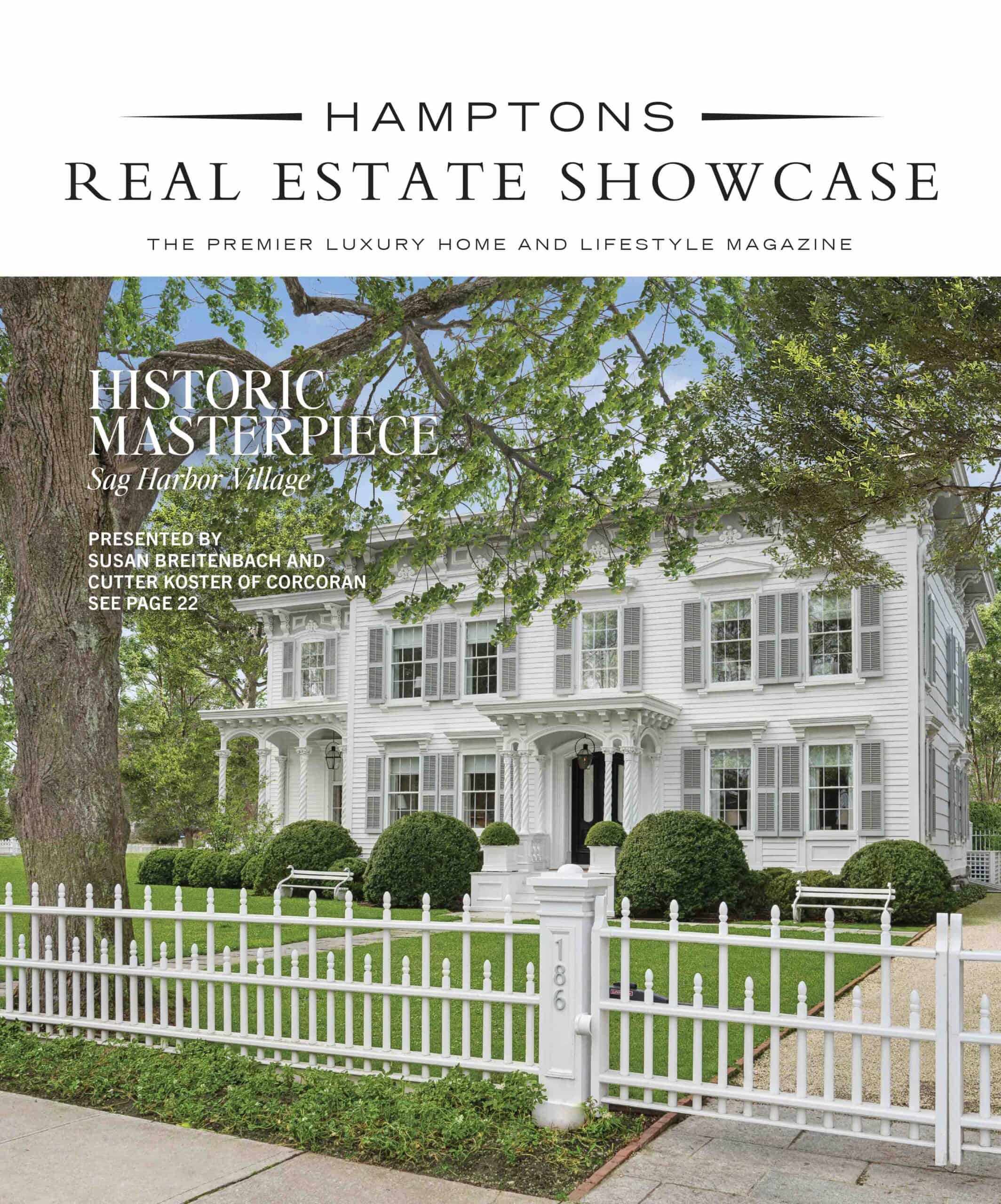With climate change and global warming being a very real concern, any step taken to reduce your carbon footprint is necessary. Whether it be recycling, opting for reusable goods rather than disposable ones, or simply turning off the lights when you leave a room, each action helps. The home you live in can draw large amounts of energy that lend to the increase in greenhouse gases. Having an awareness of this and embracing a green ethic, three builders offer their insights to what makes a home green, and what can be to done to create a beautiful yet environmentally responsible Hamptons domain.
Farrell Building Company is known for its quintessential Hamptons homes, drawing on the appeal of what brings people out east during the summer months. With a philosophy of viewing time as a commodity, they design and build their Farrell Signature Spec Homes in under one year, and use the same methodology for custom homes. Sustainable luxury is what Kyle Messinger, company vice president of sales and customer relations, says has been one of the critical components since they began.
“We were one of the first companies to start bringing ‘green’ building to the East End, including being one of the first building companies to build a LEED (Leadership in Energy and Environmental Design) certified home,” Mr. Messinger says. “Whether it’s a custom build or a move-in ready home, things such as solar energy, geothermal heating systems and efficient mechanical systems are in place, reducing overall homeowner costs. We also leverage recycled and renewable options wherever possible.”
Adding that their clients are environmentally and financially savvy, Mr. Messinger says Farrell Building Company looks to build homes that are the intersection of sleek architecture and conscious living. Whether it be their move-in ready homes or custom builds, each is thoughtfully designed.
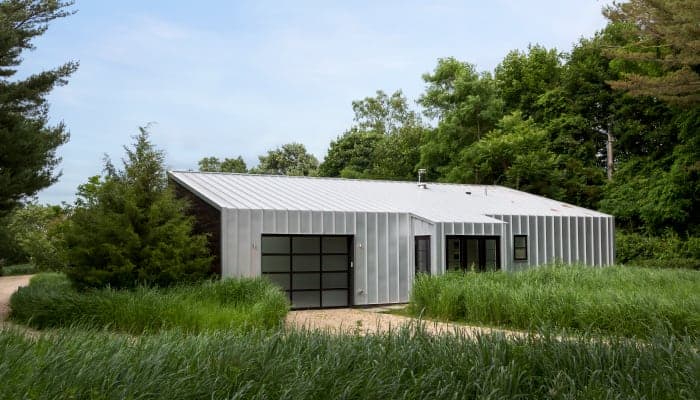
For Modern Green Home founder Peter Sabbeth, the single biggest element in a green home is its energy consumption. The Bridgehampton based architecture and construction firm aims to have a profound awareness of energy consumption, and what can be done to achieve maximum efficiency. “Starting the green process, we take into consideration all of the natural features of the property,” Mr. Sabbeth says, explaining the significance of homes in relation to things like sunlight and natural shade. “By designing correctly and taking into account these elements, it is much easier to design energy efficient systems.”
Being an architecture firm first and foremost, and following through with the construction phase, is what Mr. Sabbeth says is the best way to ensure the design intention is carried out and results in a cohesive project. While green building is the firm’s specialty, it is not the draw for many of their clients. “Barely do we ever have clients that ask for an energy efficient home,” shares Mr. Sabbeth. “They usually come to us for the design only. For the first time in ages a client asked for green things, and I was so excited. People are intrigued by green features and efficiency, but it’s never the driving force, it’s always aesthetics.”
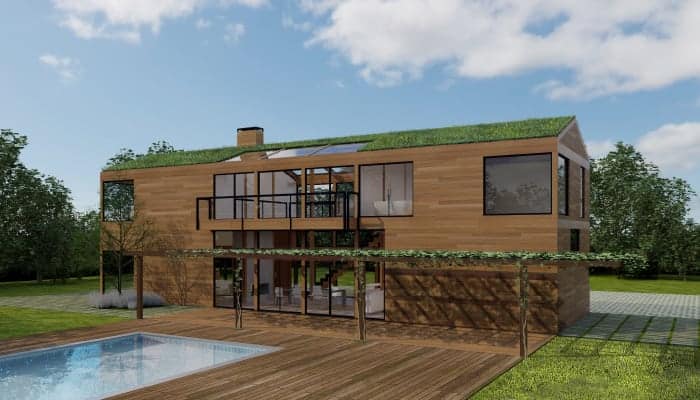
Custom engineered homes offer a different take on green building. Two years ago, Aman Developers began designing what they call Davinci Haus, customizable architect-designed homes using technology to design and deliver a luxury prefabricated home in under 32 weeks. Aside from the timeline, the company also strives to offer homes with high energy performance. Company director Punit Chugh calls Davinci Haus the “Tesla” of homes.
“We are careful in our selection and with each available choice we evaluate the rationale and impact towards the better good,” Mr. Chugh says. “Our practice is based on constantly improving our build technology and creating solutions that have an impact over energy consumption, water efficiency, and waste material management, to name a few.”
Mr. Chugh goes on to say the definition of green is ever expanding as the criteria changes. He lists energy conservation, wastewater management, material waste management, and design sensitive to disruption of the natural soil as some of the efforts Davinci Haus takes to limit its impact on the environment. “We are very conscious as a group to make sure that each initiative is contextual and not done for a label or star, but for a choice of building a better built environment that is truly functioning in sync with nature and its inhabitants,” Mr. Chugh explains.
Companies that provide specific materials to builders have been taking steps toward green initiatives as well. Speaking of Tesla, they have taken to the solar trend with roof panels that are not as obvious as those commonly seen on residential and commercial properties. Meant to complement a home’s architecture, the solar cells are individual tiles that are made of tempered glass, making them more durable than traditional tiles.
As inviting the outside in is an increasingly popular trend in home design, folding glass walls that open completely are an aesthetically appealing feature that can also offer air, water, structural, thermal, and forced entry results. NanaWall creates these multi-feature luxury products that are National Fenestration Rating Council (NFRC) rated and certified for energy efficiency in all climates, as well as American Association of Medical Assistants (AMMA) tested for air, water, structural, and forced entry. Their purpose not only meets the design needs of discerning clients like those in the Hamptons, but also offers peace of mind as energy remains a top concern worldwide.
With modern prefabricated homes, those designed around the natural environment, or traditional builds that embrace a green building ethic, homes in the Hamptons offer more than the epitome of luxury living. If you’re looking to buy or build, these are just some of the elements to look for in your search. Happy “green” building!





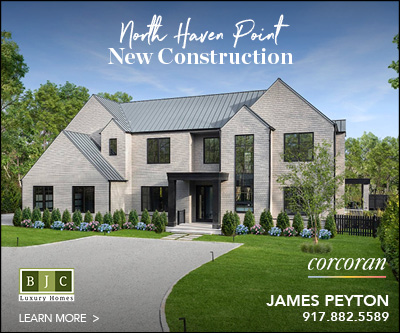
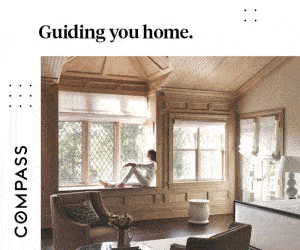
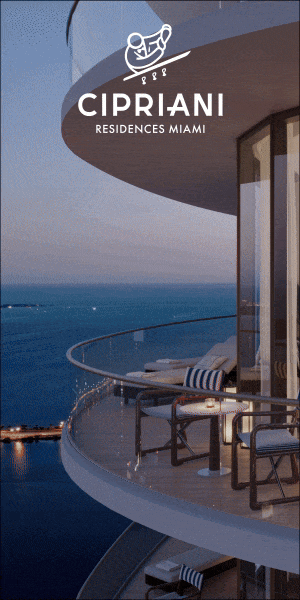
![Join us May 6th at The Harmonie Club for the Spring Salon Luncheon, a beautiful gathering in support of a truly meaningful cause. Together, we’ll raise critical funds and awareness for @campgoodgriefeeh—@eastendhospice’s summer bereavement camp helping children and teens navigate loss with compassion, connection, and healing. [link in bio]](https://hamptonsrealestateshowcase.com/wp-content/uploads/sb-instagram-feed-images/491527001_18506092897030135_3117653411609489602_nfull.webp)
![Welcome to this exquisite custom-built home in the prestigious Quogue South estate section, just moments from Dune Road and some of the world’s most breathtaking ocean beaches. Completed in 2024, this expansive shingle-style residence offers 6 beds, 7 full and 2 half baths, a separate legal guest cottage, heated gunite saltwater pool with spa, all set on a beautifully manicured 0.74± acre lot. Represented by @lauren.b.ehlers of @brownharrisstevens. [link in bio]](https://hamptonsrealestateshowcase.com/wp-content/uploads/sb-instagram-feed-images/491516869_18505931593030135_4655757731678000577_nfull.webp)
![Discover 11 Oyster Shores, a unique marriage of thoughtful design, uncompromised execution and meticulous craftsmanship expressed across nearly 6,000± sq. ft. of highly curated living space. Brought to life under the watchful eye of Blake Watkins, the visionary behind WDD, the project is a refreshing departure from the ordinary. Represented by @nobleblack1 of @douglaselliman. [link in bio]](https://hamptonsrealestateshowcase.com/wp-content/uploads/sb-instagram-feed-images/491440257_18505740808030135_9064730571228880657_nfull.webp)
![Reserve your ad space now in the Memorial Day “Summer Kick-Off” Issue of #HRES! 🍋 Be seen by high-end buyers and sellers across the Hamptons, Manhattan, and South Florida—just in time for the start of the season. Secure your spot today and make waves this summer 🌊☀️ [link in bio]](https://hamptonsrealestateshowcase.com/wp-content/uploads/sb-instagram-feed-images/491441694_18505573426030135_4475989184561040528_nfull.webp)

![Tuesday, April 15, was Tax Day for most, but for someone in Palm Beach, it was closing day! The nearly 8,00± sq. ft. Mediterranean-style residence at 240 N Ocean Boulevard, with direct ocean views and a private, 100-foot beach parcel, closed at exactly $26,670,750. The seller was represented by Jack Rooney of @douglaselliman and Elizabeth DeWoody of @compass while Dana Koch of @thecorcorangroup brought the buyer. [link in bio]](https://hamptonsrealestateshowcase.com/wp-content/uploads/sb-instagram-feed-images/491445351_18505056166030135_4907944420436119099_nfull.webp)
![Previously featured on our 2024 Columbus Day issue cover, 74 Meeting House Road has officially sold! This stunning new construction in Westhampton Beach offers the perfect blend of thoughtful design and timeless style. Congratulations to @kimberlycammarata of @douglaselliman who held the listing! [link in bio]](https://hamptonsrealestateshowcase.com/wp-content/uploads/sb-instagram-feed-images/491441951_18504901357030135_2664904795600183799_nfull.webp)
![Located South of the highway in Southampton this 4 bedroom, 5.5 bath multi-story property, offers extensive exterior architectural detail throughout. 60 Middle Pond Road offers breathtaking views and tranquil living, nestled along the serene shores of Middle Pond and Shinnecock bay. Represented by @terrythompsonrealtor @douglaselliman. [link in bio]](https://hamptonsrealestateshowcase.com/wp-content/uploads/sb-instagram-feed-images/491451873_18504686110030135_5284427082339135969_nfull.webp)
